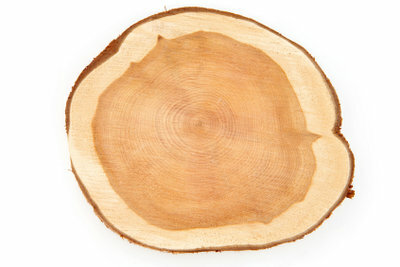Connect a water-bearing stove
Water-bearing stoves combine the romance of the stove with the optimal use of a renewable raw material - wood. Connecting a water-bearing stove is a matter for very experienced do-it-yourselfers and installation professionals.

Construction and connection of a water-bearing stove
- In contrast to a simple wood-burning stove, a water-bearing wood-burning stove uses parts of the heating power to heat the heating water for a central heating system.
- For this purpose, water-bearing stoves have heat exchangers that also use the combustion heat and waste heat.
- Stoves that are already designed and constructed as such are built with double walls, and the water in the heating coils is heated directly above the combustion chamber.
- Simpler constructions and attachments only use the heat of the circulating air and the exhaust gases. An efficiency of over 80 percent is quite realistic. The energy savings are considerable.
- The water circuit must normally be connected to the boiler via a pump controlled by a regulator. A direct connection to the heating circuit is not recommended, especially since the typical use of a wood-burning stove is not regular and constant.
- Because of the high temperatures, especially in a water-bearing stove with a high heating output - up to 30 KW (!) - you should always connect the fireplace to a buffer storage tank. This is particularly recommended when other water-bearing heat exchangers, such as solar systems and heat pump systems, are connected to the heating circuit.
Retrofitting the chimney - construction instructions
Anyone who buys a fireplace today is not only thinking of romantic hours by the open fire. …
Requirements for connecting the fireplace
- The choice of location is critical with a water-bearing stove, especially when it comes to retrofitting. Even lightweight constructions with an attachment are very heavy. For free-standing stoves, the load-bearing capacity of the floor must therefore always be checked. In some cases the floor needs to be supported from the basement. With a typical heating output of around 10 KW, an empty weight of 200 to 250 kilograms must be taken into account.
- An existing chimney must be approved for multiple occupancy and approved by the chimney sweeper. Often, however, stoves are placed on outside walls in order to mount their own stainless steel fireplace on the outside. These are also available as kits suitable for do-it-yourselfers. Even an experienced "layperson" can connect the outdoor fireplace.
- The lighter built-in models for the Assembly in the wall are mostly only suitable for new buildings. When retrofitting such models that intervene in the statics of a load-bearing wall in your own chimney, a construction specialist must be called in.
- When choosing the location for a water-bearing stove, the distance from the central heating group should also be taken into account. The following applies to the connection: the shorter the better. In addition to the space required by the control unit, there must be space for the thermal discharge safety device and, above all, a drainage facility in the area of the infeed.
- With structurally favorable conditions, both the installation and retrofitting of a water-bearing stove are profitable. Typical prices are around 3,000 euros. For the installation work, you should estimate around 6,000 euros without having to pay for material and labor yourself.
How helpful do you find this article?


